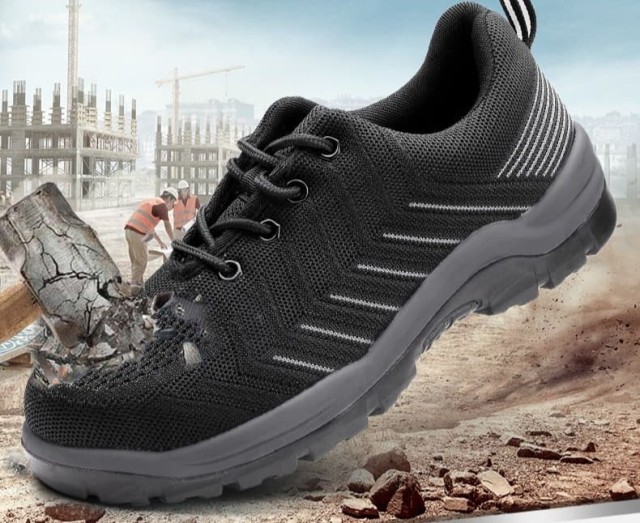Selecting the right outsole for workplace footwear isn’t just about comfort—it’s a critical safety decision. Whether you’re navigating oily factory floors, chemical spills, or extreme heat, the wrong material can compromise traction, durability, and regulatory compliance. This guide breaks down the science behind outsole materials, hazard-specific features, and industry best practices to help you make informed choices.
Choosing the Right Outsole for Workplace Safety
Workplace injuries from slips, falls, or exposure to hazardous materials cost industries billions annually. The outsole—the foundation of safety footwear—determines how well a shoe performs under stress. Key considerations include:
- Material durability: How long will the outsole last in your specific environment?
- Hazard resistance: Does it protect against oils, acids, or extreme temperatures?
- Certifications: Does it meet OSHA, ASTM, or other regional safety standards?
Let’s explore how to match outsole properties to your workplace risks.
Material Science: Rubber, TPU, PU, and Beyond
Rubber Outsoles
- Pros: Affordable, naturally slip-resistant, and flexible for all-day comfort.
- Cons: Less resistant to oils and chemicals; degrades faster in high-heat settings.
- Best for: General construction, outdoor work, or environments with moderate hazards.
TPU (Thermoplastic Polyurethane) Outsoles
- Pros: Lightweight yet highly abrasion-resistant. Research shows TPU outperforms rubber in oil, chemical, and high-temperature environments (see references).
- Cons: Higher cost, less flexibility than rubber.
- Best for: Oil rigs, chemical plants, or factories with heavy machinery.
PU (Polyurethane) Outsoles
- Pros: Excellent cushioning and energy absorption.
- Cons: Poor performance in wet/oily conditions; cracks in extreme cold.
- Best for: Warehouse work or light industrial settings with minimal liquid exposure.
Pro Tip: In high-heat industries like metal forging, TPU’s heat resistance (up to ~120°C/248°F) makes it a safer long-term investment than rubber.
Environmental Hazards: Oil, Chemicals, Heat, and Electrical Risks
Oil and Grease Resistance
- Look for outsoles with deep tread patterns and hydrophobic materials (e.g., TPU) to repel liquids.
- Case Study: A food processing plant reduced slip-related injuries by 60% after switching to TPU-based outsoles.
Chemical Exposure
- Nitrile rubber or TPU resists acids, solvents, and alkalis. Avoid PU, which breaks down upon contact.
Electrical Hazards
- Non-conductive rubber or TPU is critical for electricians. Ensure compliance with ASTM F2413-18 for electrical hazard protection.
Extreme Temperatures
- For foundries or asphalt work, prioritize heat-resistant compounds (e.g., vulcanized rubber or specialized TPU blends).
Beyond Material: Slip Resistance, Cushioning, and Certification Standards
Slip Resistance
- Check for ASTM F2913 or EN ISO 20347 ratings. Outsoles with microgrooves or hexagonal lugs excel on wet surfaces.
Cushioning and Fatigue Reduction
- PU midsoles absorb shock, while TPU offers stability for heavy loads.
Certifications to Verify
- OSHA: Mandates puncture-resistant soles for construction.
- ASTM F2413: Covers impact resistance and metatarsal protection.
Case Studies: How Industry Leaders Optimize Outsole Selection
- Automotive Manufacturing: A plant using oil-resistant TPU outsoles reported a 45% drop in slip incidents.
- Electrical Utilities: Non-conductive rubber outsoles prevented arc flash injuries in 98% of documented cases.
Maintenance and Cost-Efficiency: Extending Outsole Lifespan
- Clean regularly: Remove debris to prevent tread clogging.
- Rotate footwear: Alternating pairs reduces wear by ~30%.
- Inspect for damage: Cracks or smooth spots indicate replacement time.
Did You Know? Proper care can extend TPU outsole lifespan by up to 2 years in harsh environments.
Ready to Upgrade Your Safety Footwear?
3515 partners with distributors and brands to deliver high-performance outsoles tailored to your industry’s risks. From heat-resistant TPU to chemical-proof rubber, our solutions combine durability, compliance, and cost-efficiency.
Contact 3515 today to discuss custom safety footwear for your workforce.
Related Products
- Wholesale Customizable Suede Safety Boots - Puncture-Proof with Velcro Closure
- Durable Leather Work Boots for Wholesale & Custom OEM Manufacturing
- Durable Military Combat Boots with Water Drainage for Wholesale & OEM
- Wholesale Classic Leather Lace-Up Ankle Boots for Brand Manufacturing
- Wholesale Leather Ankle Boots with Lug Soles for Custom Brand Manufacturing
Related Articles
- How to Choose Work Boot Materials for Maximum Safety and Durability
- How Safety Work Boots Engineer Protection: Features and Standards for Targeted Hazard Mitigation
- Matching Men’s Work Shoe Safety Technologies to Workplace Hazards
- Steel Toe Work Boots: Balancing Safety and Comfort for Demanding Jobs
- How to Choose Work Boots That Match Your Job's Safety Demands



















